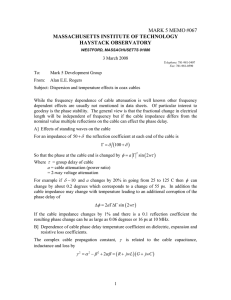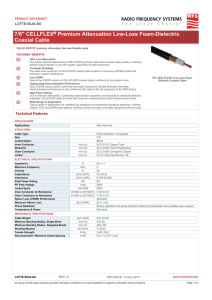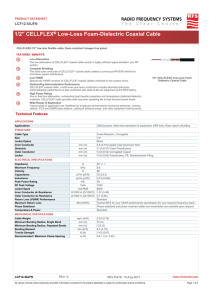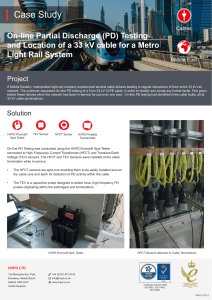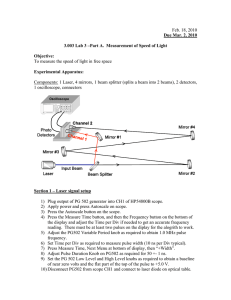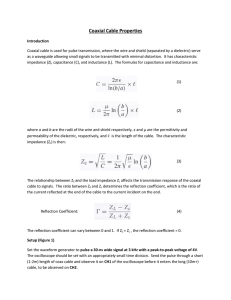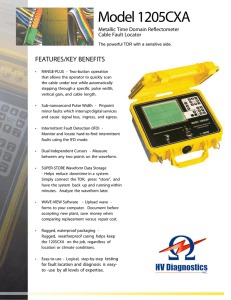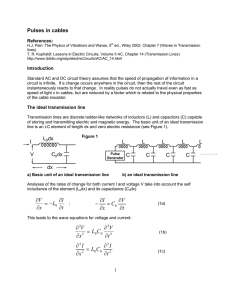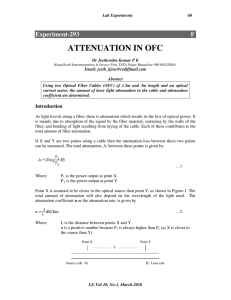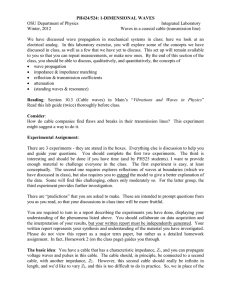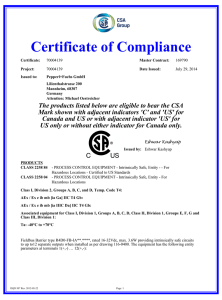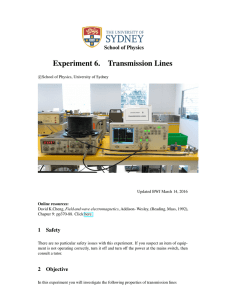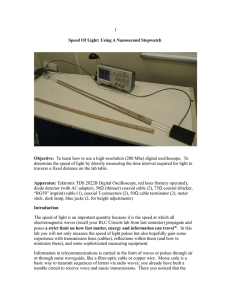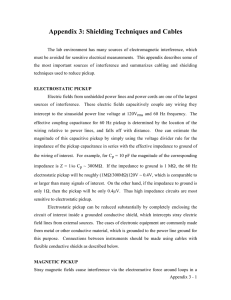Problem Set 1 Due Thursday January 25, 2007
advertisement
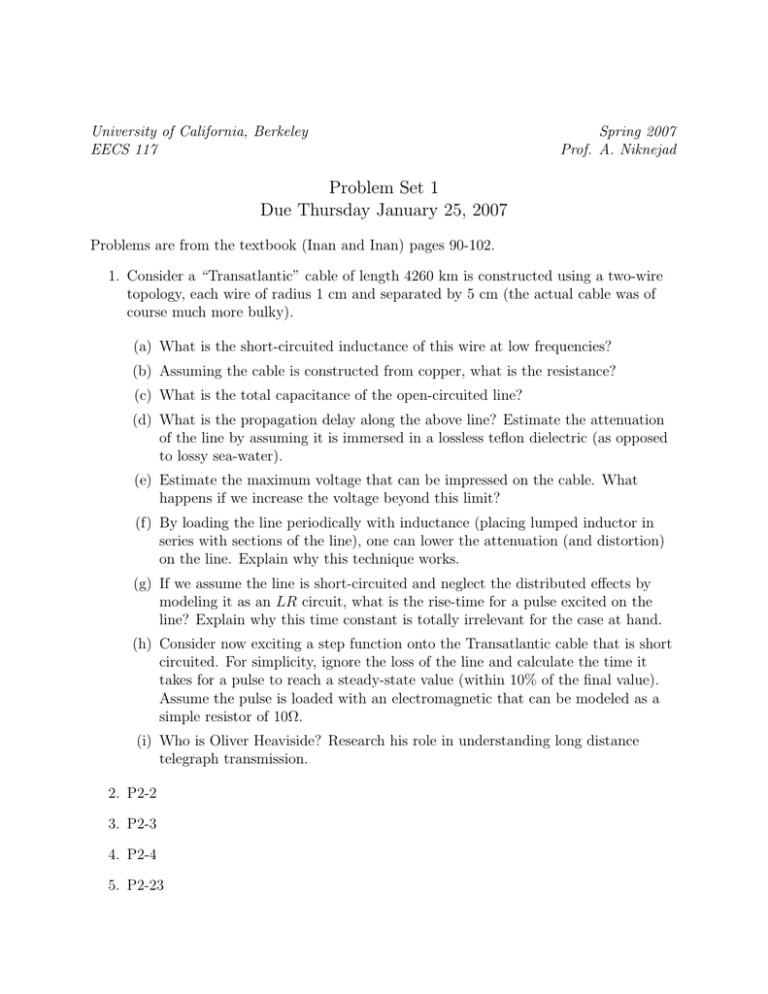
University of California, Berkeley EECS 117 Spring 2007 Prof. A. Niknejad Problem Set 1 Due Thursday January 25, 2007 Problems are from the textbook (Inan and Inan) pages 90-102. 1. Consider a “Transatlantic” cable of length 4260 km is constructed using a two-wire topology, each wire of radius 1 cm and separated by 5 cm (the actual cable was of course much more bulky). (a) What is the short-circuited inductance of this wire at low frequencies? (b) Assuming the cable is constructed from copper, what is the resistance? (c) What is the total capacitance of the open-circuited line? (d) What is the propagation delay along the above line? Estimate the attenuation of the line by assuming it is immersed in a lossless teflon dielectric (as opposed to lossy sea-water). (e) Estimate the maximum voltage that can be impressed on the cable. What happens if we increase the voltage beyond this limit? (f) By loading the line periodically with inductance (placing lumped inductor in series with sections of the line), one can lower the attenuation (and distortion) on the line. Explain why this technique works. (g) If we assume the line is short-circuited and neglect the distributed effects by modeling it as an LR circuit, what is the rise-time for a pulse excited on the line? Explain why this time constant is totally irrelevant for the case at hand. (h) Consider now exciting a step function onto the Transatlantic cable that is short circuited. For simplicity, ignore the loss of the line and calculate the time it takes for a pulse to reach a steady-state value (within 10% of the final value). Assume the pulse is loaded with an electromagnetic that can be modeled as a simple resistor of 10Ω. (i) Who is Oliver Heaviside? Research his role in understanding long distance telegraph transmission. 2. P2-2 3. P2-3 4. P2-4 5. P2-23 6. Consider a microprocessor chip clocked at 3 GHz in communication with a memory chip on a PC board. They are connected by a transmission line of length 10 cm fabricated on the FR4 substrate ( = 4.7) with characteristic impedance of 30Ω. What is the fastest speed (number of clock cycles) that we can expect to read data into the memory? Do you recommend terminating the transmission line? At which end(s)? Why or why not? 7. P2-7 8. P2-12 9. P2-28 10. P2-31 2






